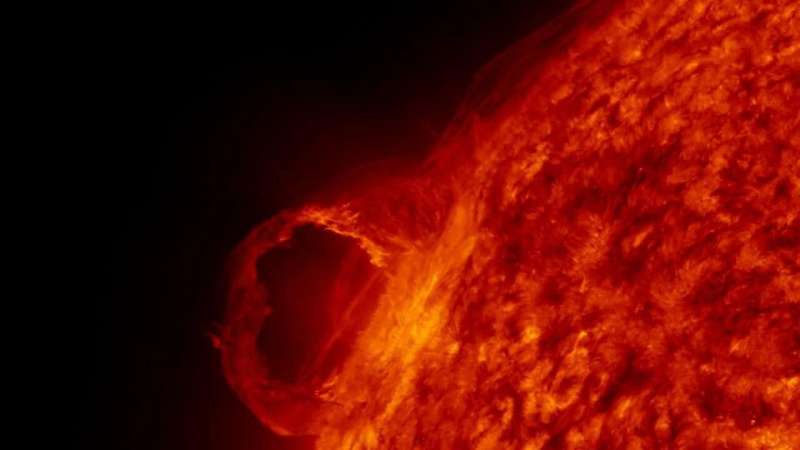Credit: Pixabay/CC0 Public Domain
A mass of solar material that erupted from the sun on Oct. 9, 2021, reached Earth on Oct. 12. The Earth-directed coronal mass ejection, or CME, elevated the Kp index, a measure of disturbance to Earth's magnetic field, to 6 (moderate level). Kp index levels range from 0 (quiet) to 9 (intense).
The CME was associated with an M1.6 class solar flare from Active Region 2882 on that peaked on Oct. 9 at 6:38 UTC (2:38 a.m. EDT). M-class flares are a tenth the size of the most intense flares, the X-class flares. The number provides more information about its strength. An M2 is twice as intense as an M1, an M3 is three times as intense, etc. The flare also generated a solar energetic particle eruption that was detected by NASA's Solar Terrestrial Relations Observatory-Ahead, or STEREO-A spacecraft, at 7:51 UTC (3:51 a.m. EDT).
STEREO-A also detected the CME from its vantage point away from Earth. The CME's initial speed was estimated by NASA's Moon to Mars Space Weather Operations Office to be approximately 983 kilometers per second (610 miles per second). This and other information about the event is reported in the Space Weather Database Of Notifications, Knowledge, Information (DONKI) catalog.
Active Region 2882, shown here near the middle of the sun’s disk, erupted with a moderate level solar flare on Oct. 9, 2021. This animated gif shows images from the 131 Angstrom channel of NASA’s Solar Dynamics Observatory spacecraft/Atmospheric Imaging Assembly instrument. Credit: NASA/SDO
The COR2 coronagraph on NASA’s Solar Terrestrial Relations Observatory-A spacecraft, which views the sun’s corona by occluding its bright surface, detected this Earth-directed CME on Oct. 9, 2021. Credit: NASA/STEREO
Provided by NASA
























